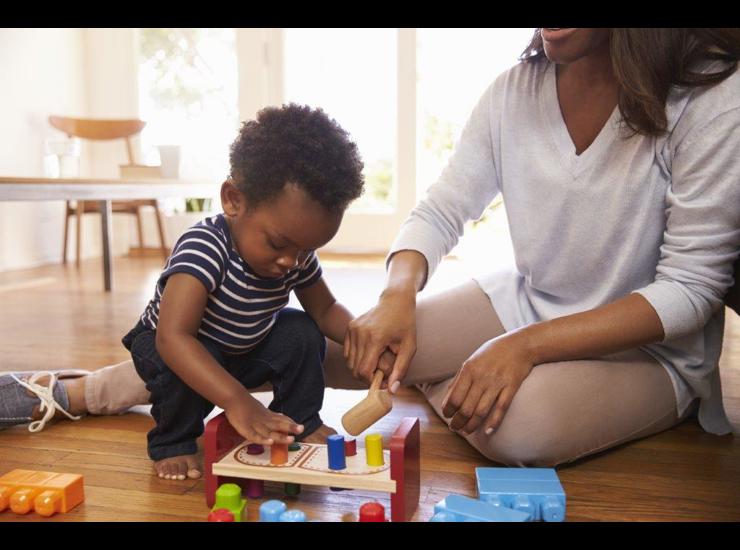
Every year, governments, charities and local authorities spend millions of pounds on training, or exhorting, teachers and parents to talk to children. Even President Obama has got in on the act.
All of these programmes assume the more we talk to children in the early years, the better their language development will be. And this matters because good language skills are crucial for improving social mobility, health inequality and employment.
However, the million dollar question is this: is there actually a relationship between these two measures: do children who hear a lot of talk learn more vocabulary and, in general, learn language faster? There are, indeed, vast differences between the amount of talk addressed to children and vast differences in the speed with which children learn language. In one US study that asked parents to fill in checklists about their 18-month-old children’s early vocabulary knowledge, the slowest children were reported as knowing only 4 words while parents reported the fastest children as knowing 320. In our own LuCiD Language 0-5 Project in which infants were fitted with day-long recorders for one day at 18 and 21 months, the children of the most talkative parents heard an average of 43,926 words per day while the children of the least talkative heard 7,239 words a day (Jago et al., submitted). But are these two facts related? Does it matter how much we talk to babies?
Thankfully, the answer is yes. The scientific evidence overwhelmingly supports the idea that children whose parents talk a lot to them have faster vocabulary development. For example, a seminal study run by Anne Fernald and her colleagues showed that the amount mothers talk to their 18-month olds was related to how fast the children are to understand words and the size of their vocabulary at 24 months. Worryingly, children from low income families seem disproportionately disadvantaged. In a similar study using day-long recordings in the USA, researchers found that children from lower SES (socioeconomic status) families vocalised less and heard fewer words per day than children from higher SES families, but they also pointed out that there was a wide range of variation within SES groups as well as the average differences between them.
However, while the amount of talk is important, the quality of talk may be even more important, especially beyond the very early stages of word learning. What we say might be just as important as how much we say.
For example, at the earliest stages of language acquisition (e.g. around 18 months of age) tuning into children’s current focus of attention and labelling objects they are interested in is related to the range of words they use . We know from many studies that immediately responding to children’s utterances by expanding them is related to a number of language measures including their ability to correctly form questions, plurals and past tense and to their ability to talk about emotions, desires and cognitions. One review article found benefits for expanding the utterances of children with developmental language disorder (DLD) or who were late talkers.[evml1] So, in addition to what may be direct effects of the frequency with which words and sentences are heard, conversational turns which focus on what the child has just said will affect the child’s language development.
In our very own Language 0-5 project, conversational turns between caregiver and child ranged from 300-1804 per day. Conversational turns are important because they can provide an immediately relevant model which contains grammatical information as well as information about how other words are related to what the child has just said. Precisely because this ‘contingent talk’ is very close in time to the child’s own utterance and because it is related to it, it will be a rich source for learning new aspects of language.
As children get older (around two years), using a diverse vocabulary including rare or infrequent words as well as more complex grammar becomes more important to enable them to develop their language At even later ages (from around three years) children whose caregivers talk to them about things and events outside the ‘here and now’ e.g. what happened yesterday and what will happen tomorrow (‘decontextualized talk’) understand a greater number of words. Another study found that children whose teachers used more complex utterances over a year in the classroom, also showed greater use of more complex language at the end of the preschool year.
These results are fairly well established in the literature for children and families in what are called WEIRD (Western, Educated, Industrialised, Rich, Democratic) cultures. However there are many questions that we still do not know the answers to. One is that the studies largely focus on parent-child interactions, so we know little about the effects of others on children’s language development e.g. their older siblings, grandparents and other carers. Another is the precise relationship between quantity, immediate responsiveness and complexity.
On the one hand, these relationships are very unlikely to be linear. Presumably you could overwhelm a child’s learning abilities if you talked non-stop to them in a way that completely ignored their own focus of interest! On the other hand, what a child can absorb from their environment is going to depend on his or her own level of development and how the caregivers and others change their language as a result.
So the bottom line is this. Language learning is a highly interactive process. Children learn best when you talk about the things they are interested in (Lego bricks not Brexit) and when you adjust your own speech to their current developmental level. Don’t talk *to* children. Talk with them.
Further information
Find out more about the research in this area, via our Evidence Briefing on Quantity vs quality of child-directed speech: Which matters most?

